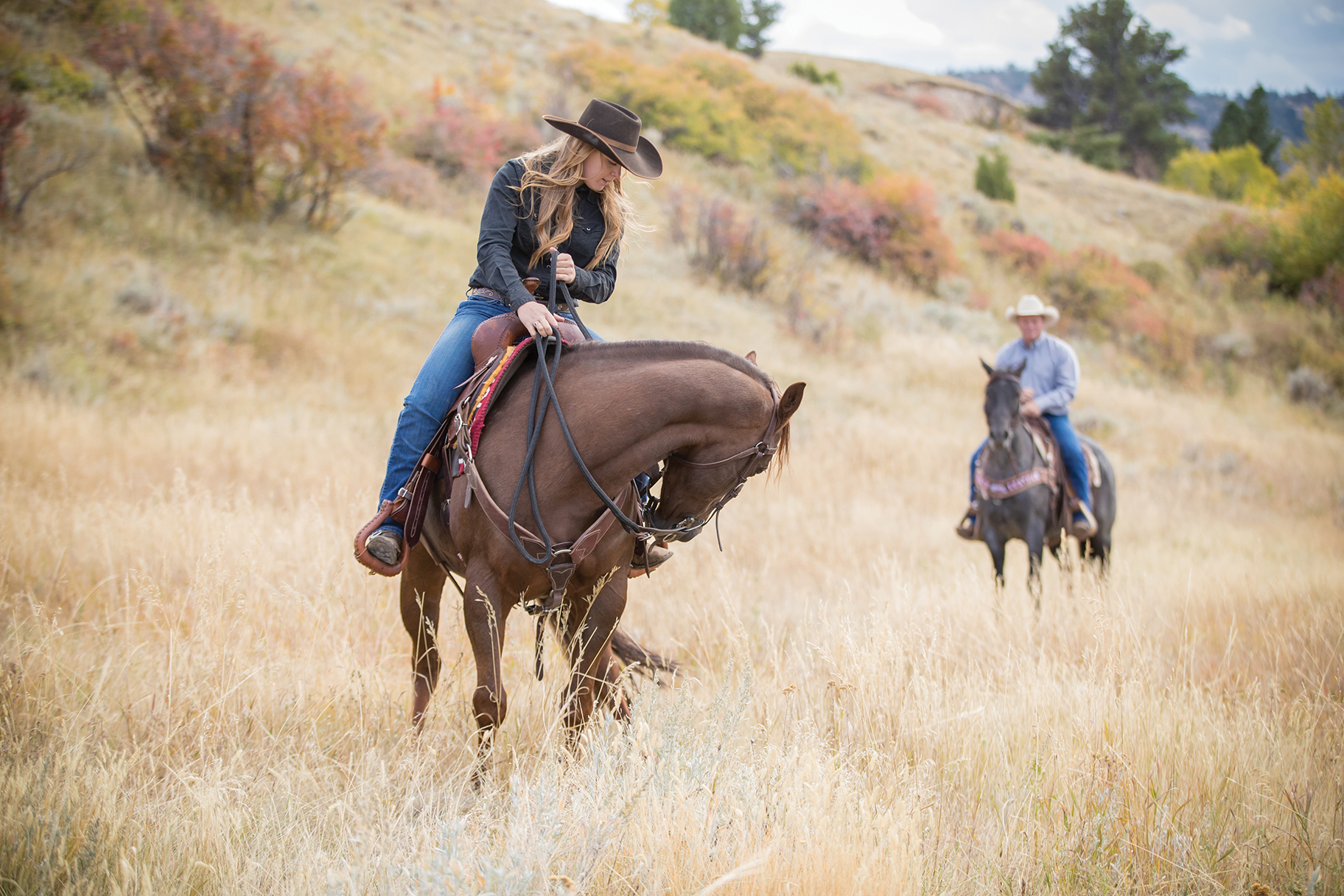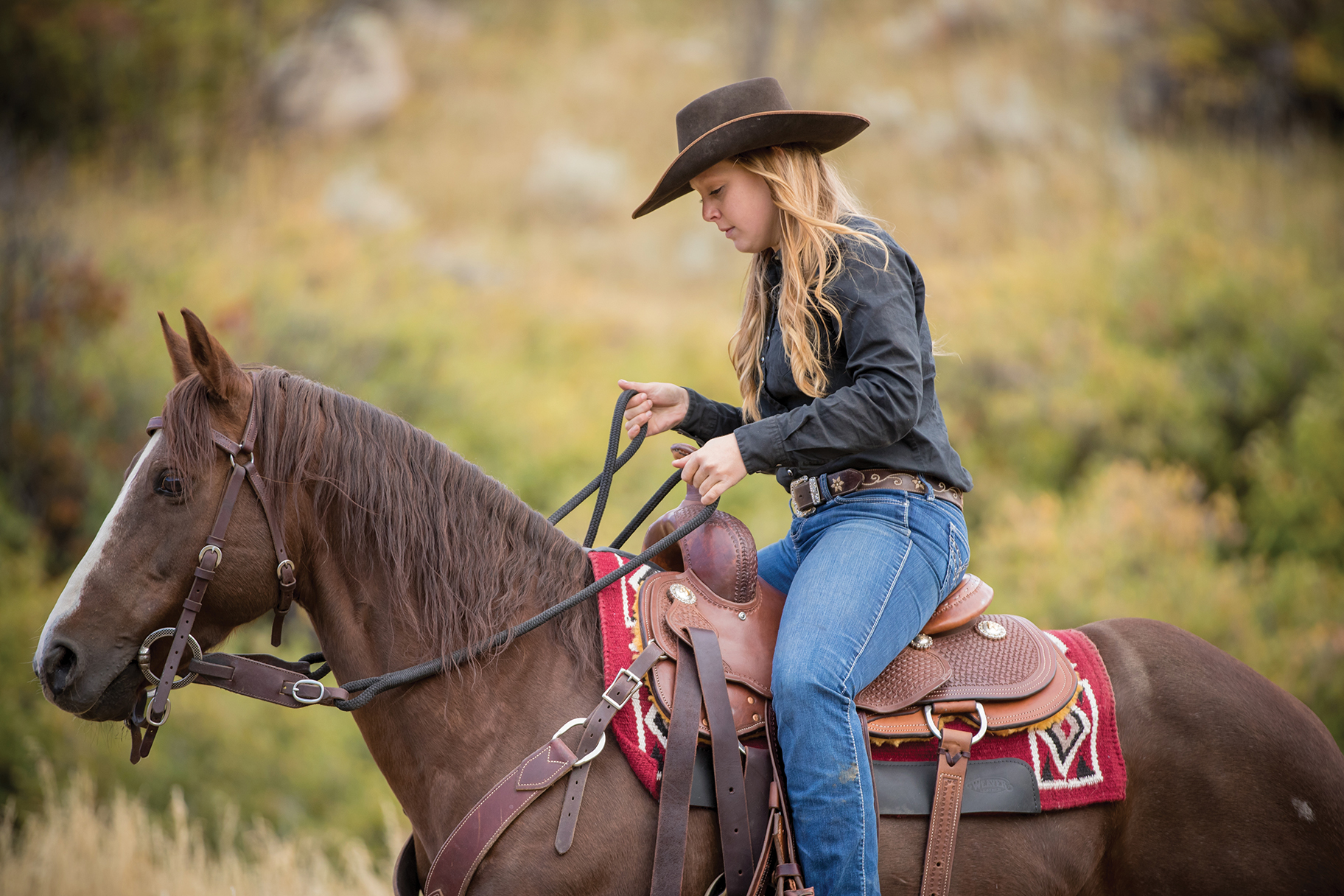It’s difficult to admit when you’re afraid of your horse. But fear is completely natural and justified. Horses are large animals, capable of hurting you if you’re not a careful, skilled leader/rider.
New riders are often more comfortable acknowledging their lack of confidence, and as a byproduct are also the most likely to ask for help. Experienced riders who try a new skill or activity, such as the competitor who takes her horse on the trail or someone who’s come off a long break to return to riding, find they too struggle with confidence. But, unlike new riders, they’re less likely to ask for help. Both types of riders need to establish their confidence.
When you’re in any riding situation, the more confident you are, the less likely you are to find yourself in trouble. It also helps you feel more capable of controlling yourself and your horse in stressful situations. Here I’ll share eight ways to improve your confidence for trail riding, no matter if you’re new to riding or not.
Practice, practice, practice. The best way for any rider to build confidence is through experience. The more saddle time you can get, and especially under the conditions in which you’ll commonly ride, the more you’ll build your self-confidence. The longer you spend away from the saddle, the less muscle-memory you have and the more timid you’ll be. Riding more often is the key to being confident you can manage your horse in many situations.
Install the E-brakes. A single-rein stop is your emergency brake. It’s a simple exercise that disengages your horse’s hindquarters and makes it difficult for him to put you in a dangerous position. As soon as your horse’s back legs cross, he’s unable to move forward or laterally to bolt. This keeps you in the driver’s seat. Master this maneuver before hitting the trail.

Mallory Beinborn
The Cavalry stop is another way to regain control if your horse spooks or tries to run off. It’s a two-rein stop, which applies pressure at different heights to stop a runaway. The lower rein acts as the brake while the higher rein keeps the horse’s head straight. Use this approach when disengaging your horse’s hindquarters doesn’t work.

Mallory Beinborn
Use the two-rein stop. A higher-level skill, the two-rein stop instills confidence in your horse’s responsiveness and your ability to control him. To practice at home, apply slightly more pressure to one rein over another, like you would in a single-rein stop. At the same time, pick up the other rein to reinforce the stop. Once his forward motion ceases, softly ask for a few steps backward. Knowing your horse has this level of responsiveness helps you feel secure.
Pick up exercises from DVDs and magazines. Continue to educate yourself and practice new exercises and maneuvers. Find a drill in a magazine, DVD, or book and practice it until you can mimic it with little difficulty. As you master new skills and expand your riding horizons, you become a more confident rider.
Watch your horse. If you don’t know what your horse is capable of, you don’t know if you’re prepared to handle it. Unknown, untapped potential is intimidating, especially if there’s added stress. Get to know your horse by watching him when he thinks you’re not around, such as when he’s turned out in a round pen or pasture. See how he plays, how he interacts with other horses, how he moves, and how big his moves are. You’ll be more confident if you know what you can expect when he’s scared, whether it’s a slight crow-hop, a jump to the side, or a bolt. Once you know how he moves, develop the skills to handle those maneuvers and be confident you can gain control on the trail.
Safeguard your body. Strength acts as a buffer against injury. It improves recovery after a jarring or long ride and keeps you from getting hurt if you fall off. Obviously, you don’t ever expect to come off your horse, but if you’re less worried about your body’s resilience in any riding situation, you’ll be more confident. Less-timid riders provide the leadership a horse needs to stay calm and control his emotions on the trail. Physical conditioning is especially important for aging riders.
Use the right gear. A helmet, long pants, and boots are basic safety items that help you avoid injury. Exposed legs can cause you to ride more timidly if you’re getting scraped against brush or developing saddle sores on the insides of your legs. If you’re hesitating, your horse doesn’t have the guidance he needs to make decisions. He’ll take matters into his own hands, bullying you or acting flighty. Wear the safety gear you need to feel comfortable and safe. And be sure it fits.
Fake it until you make it. If, even after you’ve developed the requisite skills to be a confident rider, you’re still timid, trick yourself. New experiences are always a bit nerve-wracking because you don’t know what to expect. Change your reality by telling yourself that you’re prepared, capable, and have planned to the best of your ability. Sometimes a simple change of mindset can dramatically boost your confidence.






